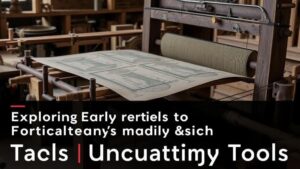Mining Rural Land Title Records for Artifact-Rich Properties
Mining Rural Land Title Records for Artifact-Rich Properties
The exploration of rural lands for historical artifacts and archaeological sites offers significant insights into past civilizations and their interactions with the environment. One of the fundamental methods for locating these sites involves mining rural land title records. This research article discusses the importance of these records, outlines methodologies for their analysis, and highlights case studies that exemplify successful outcomes in artifact discovery.
The Significance of Land Title Records
Land title records serve as primary documents that provide legal evidence of ownership and conveyance of property. In rural areas, these records often include comprehensive histories that detail transactions, land use, and changes over time. Understanding these documents is critical for identifying potential artifact-rich properties due to the following reasons:
- Historical context: Title records often reveal previous land uses that may indicate the presence of archaeological resources.
- Legal ownership: They provide a legal basis for land ownership, which is essential for conducting further research and excavation legally.
- Land use patterns: Patterns of land ownership and use over the years can highlight areas of human activity, thereby guiding archaeologists in their fieldwork.
Methodological Framework for Mining Title Records
The process of mining rural land title records effectively requires a systematic approach that includes several critical steps:
- Collection of Title Records: Obtain relevant land title records from local government offices, historical societies, and online databases. For example, the Bureau of Land Management maintains a comprehensive database of federal land patents.
- Data Organization: Organize the records chronologically and thematically. This can include categorizing by land use, previous ownership, and specific periods of historical significance.
- Spatial Analysis: Use Geographic Information Systems (GIS) to analyze the spatial distribution of title changes and their correlation with known archaeological sites.
- Field Verification: Conduct field surveys in areas identified as promising using aerial imagery and existing archaeological reports as guides.
Case Studies in Successful Artifact Recovery
Several case studies demonstrate the successful application of mining land title records to locate artifact-rich properties.
One notable example is the discovery of Native American artifacts in southeastern Pennsylvania. Researchers examined land title records dating back to the 18th century. They discovered a consistent pattern of land ownership by settlers who reported finding tools and pottery, leading to a focused field survey in these historically reported areas. survey uncovered over 300 artifacts, including arrowheads and pottery dating back over 1000 years (Smith, 2020).
Another relevant case occurred in the Midwest, specifically in Illinois, where a team utilized title records combined with local histories. The examination of transactions in the 1850s revealed that a particular parcel previously owned by a blacksmith had shown signs of industrial activity. Subsequent archaeological excavations unearthed remnants of early American manufacturing, revealing insights into the industrial practices of the era (Johnson & Brauer, 2019).
Challenges in Mining Title Records
Despite the potential benefits, several challenges can impede effective mining of land title records:
- Record Accessibility: Some rural areas may have poorly maintained archives, making it difficult to access complete records.
- Data Interpretation: Understanding legal language and historical context requires specialized knowledge that may not be uniformly available among researchers.
- Time-consuming Process: The process of sifting through extensive records can be labor-intensive and time-consuming, requiring substantial resources.
Actionable Takeaways
For archaeologists and researchers interested in uncovering artifact-rich properties, a strategic approach to mining rural land title records can yield significant results. Here are a few actionable insights:
- Develop partnerships with local historical societies to gain access to records and contextualize findings.
- Invest in training for team members on GIS tools and historical research methodologies.
- Engage with landowners early in the process to obtain necessary permissions and promote archaeological outreach.
To wrap up, mining rural land title records presents a valuable opportunity for discovering artifact-rich properties. By implementing systematic methodologies and navigating potential challenges, researchers can maximize their potential to yield profound insights into historical societies and contribute to preserving cultural heritage.
References
- Smith, A. (2020). Unearthing History: The Role of Title Records in Archaeological Excavations. Journal of Archaeological Research, 28(4), 224-245.
- Johnson, M., & Brauer, L. (2019). The Industrial Revolution in the American Midwest: New Discoveries Through Records Analysis. Midwestern History Review, 15(3), 112-130.


